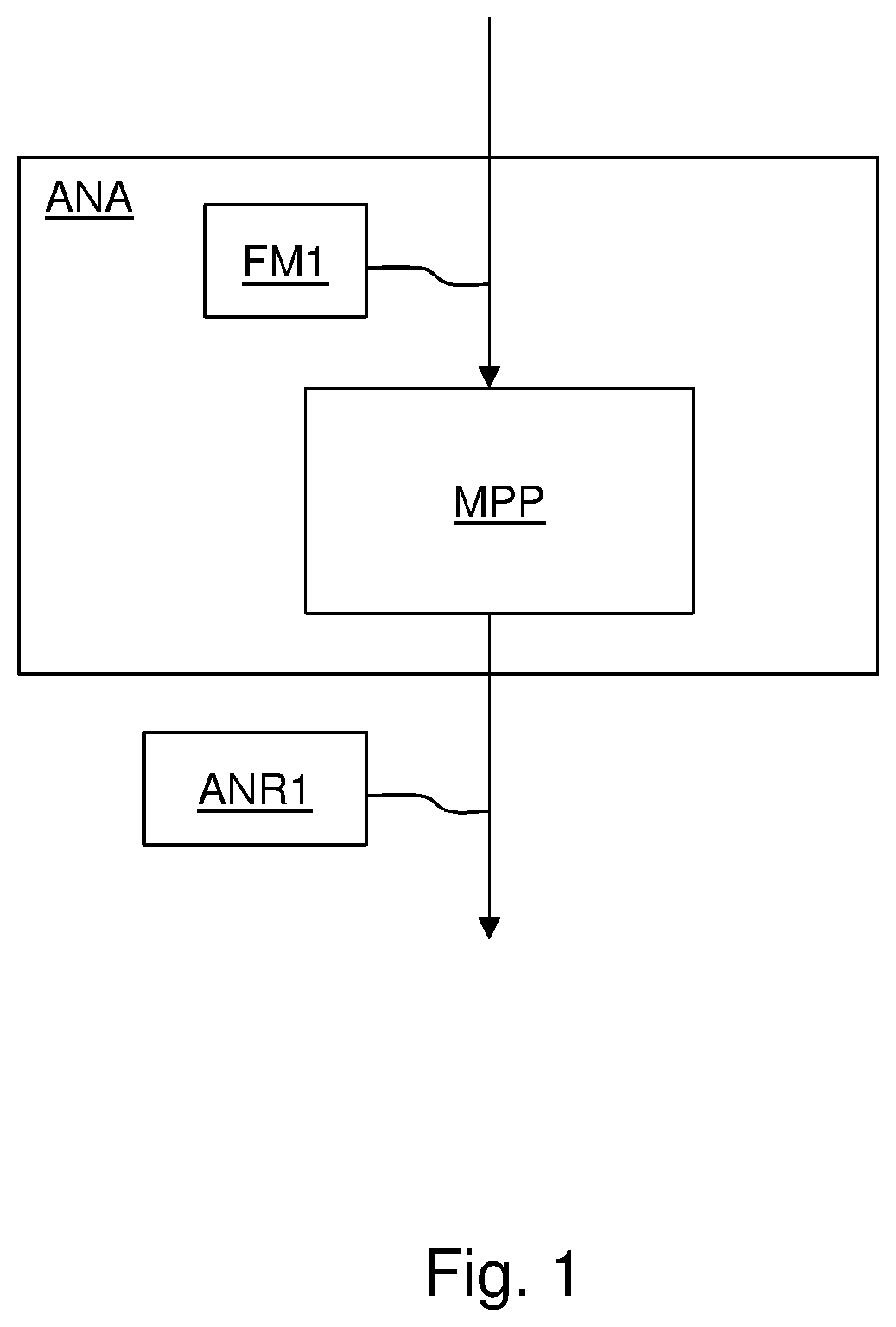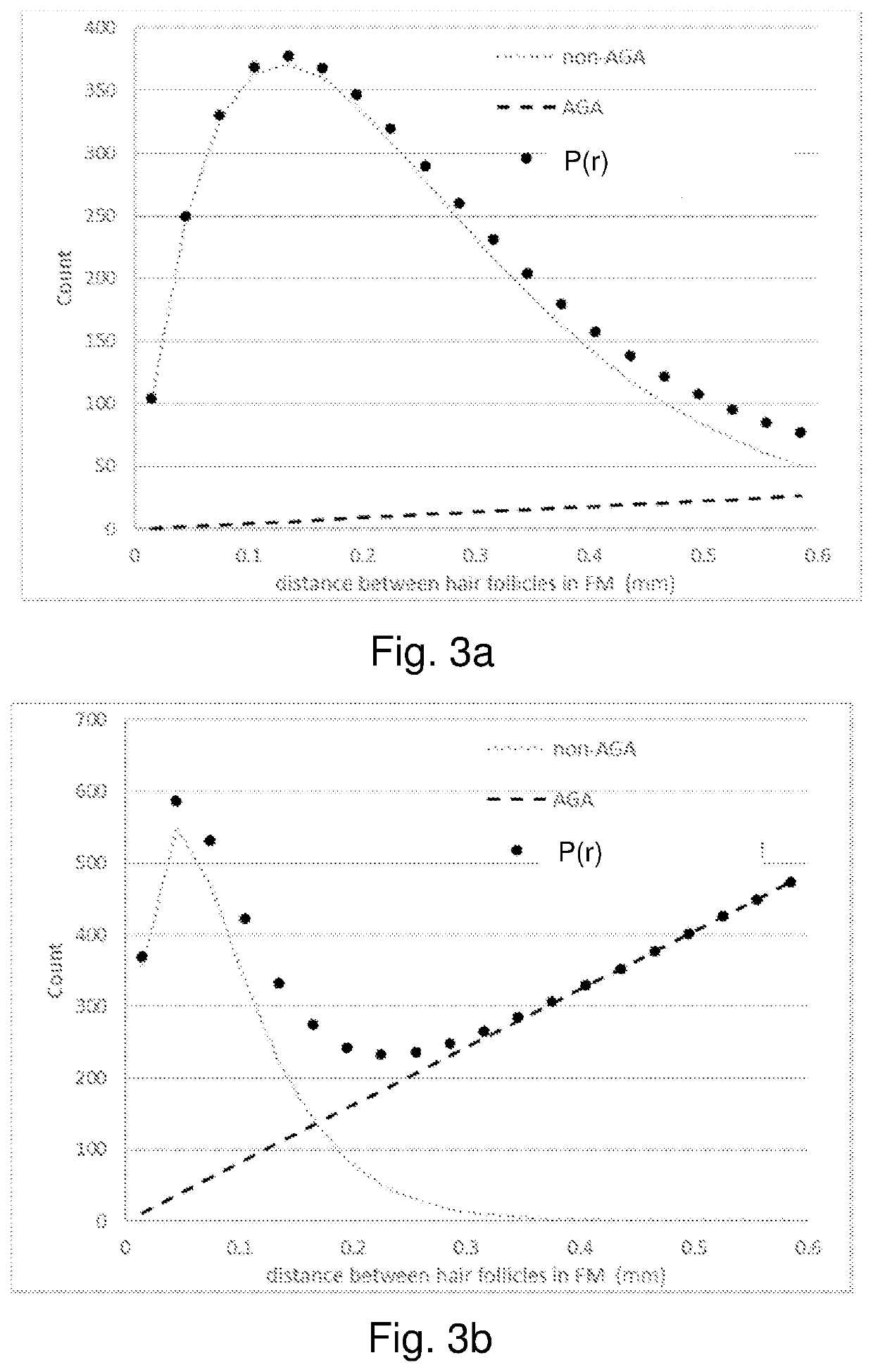Analysis unit and system for assessment of hair condition
a technology for hair condition and analysis unit, which is applied in the field of analysis unit a system for assessment of hair condition, can solve the problems of inability difficulty or even impossible to draw any conclusions, and the current use method does not allow to ensure, so as to achieve accurate determination and be more suitable for assessment
- Summary
- Abstract
- Description
- Claims
- Application Information
AI Technical Summary
Benefits of technology
Problems solved by technology
Method used
Image
Examples
Embodiment Construction
FIG. 1 shows an analysis unit ANA for assessment of hair condition according to an embodiment. The analysis unit ANA comprises a map processor MPP. The map processor is arranged to at least obtain a first follicular map FM1 representing a first plurality of hair root positions in a first videodermoscopy image. The map processor is further arranged to analyse at least the first follicular map FM1 to determine an analysis result ANR1 suitable for assessment of hair condition.
The map processor MPP may be arranged to obtain the first follicular map FM1 from a storage. The map processor MPP may be arranged to obtain the first follicular map FM1 from receiving the first follicular map FM1 over a communication channel, such as from a communication network. The map processor may obtain the first follicular map from a storage, such as from a patient database wherein the first follicular map is stored. The map processor may alternatively obtain the first follicular map from an image processor...
PUM
 Login to View More
Login to View More Abstract
Description
Claims
Application Information
 Login to View More
Login to View More - R&D
- Intellectual Property
- Life Sciences
- Materials
- Tech Scout
- Unparalleled Data Quality
- Higher Quality Content
- 60% Fewer Hallucinations
Browse by: Latest US Patents, China's latest patents, Technical Efficacy Thesaurus, Application Domain, Technology Topic, Popular Technical Reports.
© 2025 PatSnap. All rights reserved.Legal|Privacy policy|Modern Slavery Act Transparency Statement|Sitemap|About US| Contact US: help@patsnap.com



